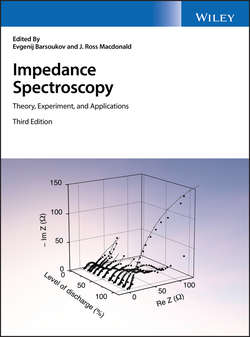Описание книги
The Essential Reference for the Field, Featuring Protocols, Analysis, Fundamentals, and the Latest Advances Impedance Spectroscopy: Theory, Experiment, and Applications provides a comprehensive reference for graduate students, researchers, and engineers working in electrochemistry, physical chemistry, and physics. Covering both fundamentals concepts and practical applications, this unique reference provides a level of understanding that allows immediate use of impedance spectroscopy methods. Step-by-step experiment protocols with analysis guidance lend immediate relevance to general principles, while extensive figures and equations aid in the understanding of complex concepts. Detailed discussion includes the best measurement methods and identifying sources of error, and theoretical considerations for modeling, equivalent circuits, and equations in the complex domain are provided for most subjects under investigation. Written by a team of expert contributors, this book provides a clear understanding of impedance spectroscopy in general as well as the essential skills needed to use it in specific applications. Extensively updated to reflect the field’s latest advances, this new Third Edition: Incorporates the latest research, and provides coverage of new areas in which impedance spectroscopy is gaining importance Discusses the application of impedance spectroscopy to viscoelastic rubbery materials and biological systems Explores impedance spectroscopy applications in electrochemistry, semiconductors, solid electrolytes, corrosion, solid state devices, and electrochemical power sources Examines both the theoretical and practical aspects, and discusses when impedance spectroscopy is and is not the appropriate solution to an analysis problem Researchers and engineers will find value in the immediate practicality, while students will appreciate the hands-on approach to impedance spectroscopy methods. Retaining the reputation it has gained over years as a primary reference, Impedance Spectroscopy: Theory, Experiment, and Applications once again present a comprehensive reference reflecting the current state of the field.
